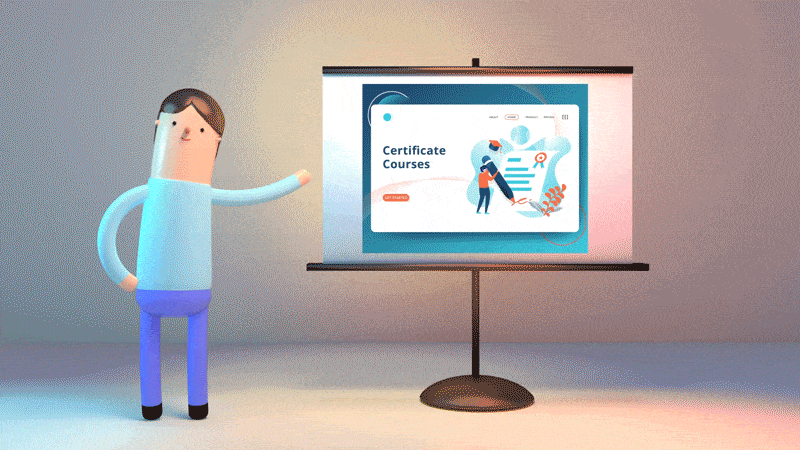by Sarah E
Not so long ago learners were turning up to a hotel conference room, greeted with an urn of coffee, tentatively choosing from a plate of pastries eager to attend your PowerPoint training course; to learn something new, improve themselves or gain a qualification to help them do their job better.
Then suddenly: Hello 2020; a global pandemic. Everyone: STAY AT HOME.
Demand for me&you’s services for e-learning, and production of digital workshops, has grown exponentially in recent months. We’ve made mistakes, taken the long route, as result we've learnt a lot, that we want to share with our readers how to transition to an online elearning platform.
Here’s me&you’s top ten considerations for digitally transforming face-to-face presentations, workshops and training programmes.
10. Purpose: Know why you’re doing it and what you want to achieve
-
What are the perceived benefits it will bring and to who? At me&you we care about what we deliver. We don’t want clients to invest in an educational online module with slick page transitions, engaging animations and interactive quizzes, that sits in a folder on your computer because it’s not fit for purpose. Consider the bigger picture and make your efforts matter.
-
Is it relevant, have you considered the changes that the lockdown has brought will impact your industry?
-
Is an electronic learning course the best method to achieve your objective?
-
What are your competitors doing?
9. Format: Will it be tutor or independent-led?
-
Delivering training virtually requires a different approach to a classroom environment; sharing a PowerPoint for someone to read is useless. Without an instructor to lead and facilitate the lesson the content lacks context and can be unclear, there’s no pace or interactivity that learners would get from attending in person, and no natural opportunities for discussions to occur which can raise interesting questions.
-
Will users be tested on what they have learned?
-
If they fail these tests, can they be retaken? When? What further training might be needed?
8. Goal: Define your learning outcomes
-
Knowing this early on creates a measure. Extremely useful in decision making when assessing whether content is relevant. Keep information concise. It may be an excellent diagram or video but if it’s not relevant it will only serve as a distraction to the learner, adding no value.
-
Maximise your time and effort by focusing on essential elements that meet these outcomes. Consider what the learner gains by attending.
-
What is the aim of the electronic learning and what does it endeavour to achieve?
7. Content: How will you engage your audience?
-
Will new content be created or repurposed from existing resources?

-
Does this content meet the defined learning outcomes?
-
How will content be validated, to ensure it is accurate, relevant and up to date
-
Who will create new content?
-
Are specialist educational copywriting services required?
-
Do you have useful existing materials that can be referenced?
-
Do you have full permission to use those items?
-
How long should each module take to complete?
-
Can a learner pause the programme and resume on another day?
6. Measurement: How will you know if it’s been a success?
-
What does success/failure look like?
-
Is there a target to train x number of people by specific date
-
How will you gather and process feedback from students attending the training to improve the experience.
-
What happens next?
-
Longevity- Is it a temporary solution throughout lockdown, will it replace classroom based learning permanently, complement traditional teaching methods or be delivered simultaneously?
5. Target: Who is your audience?
-
This will help define the tone of voice and language used.
-
Consider…
-
Inclusion and diversity
-
Accessibility
-
Pupil’s prerequisites and understanding of the subject
-
4. Adding value: Course accreditation
-
An accredited course is one that has been approved by a professional body. Engaging with them early and understanding their criteria and standards up front will define and guide the development of a cutting edge educational tool and simplify the approval process by the governing authority, as well as building a relationship useful for gathering insights and constructive feedback.
-
What are the requirements for accreditation?
-
Who is the governing authority and what is their process?
3. Management: Integration with existing systems to enable course registrations and issue competition certifications
-
Adding a form to an existing website to gather information from potential students.
-
Linking up existing data in a system such as SalesForce rather than duplication of information in a separate tool
2. Marketing: Increase user sign ups
-
Does the training reflect your company’s values?
-
How does developing this tool form part of your company’s overall strategy
-
Is there a plan and budget available to run a marketing campaign to encourage sign up
1. Look and feel: Overall visual presentation
You may think it’s a little strange for a creative agency to put the overall visual presentation last, whilst it’s what me&you do best and know the value it can bring to an e-learning experience, frankly if the boxes above it aren’t ticked, all you have is a good looking programme without sustenance stored on your server.
We love to learn and hear from our readers, did we miss something that makes elearning work? Share your experience with us Email me&you

